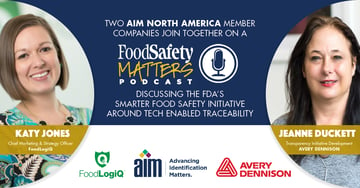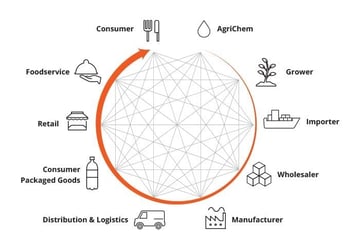Not long ago, we published an article that highlighted some food manufacturing concerns. Some of the trending challenges included quality control and total transparency in food traceability, which directly impacts the safety of food production in the United States.
These are among the most common trends, but they’re not the only ones. There are many specific safety concerns that challenge the way food is produced, manufactured, and prepared, and it’s important to know how to solve the issues at hand.
Why Food Safety Is Such a High Concern
Every year, more than 2.2 million people die from food and water contamination. They develop typhoid fever, infections, and other serious diseases. The majority of these deaths are children and elderly in developing countries.
In developed countries like the United States and the United Kingdom, food safety for consumers is regulated by government agencies that monitor the entire food supply chain. In the United States, the FDA approves all foods and manufacturing plants to work toward a supply chain that’s safe and won’t lead to health concerns.
However, that doesn’t mean that consumers are completely safe from dangerous bacteria and infections in their food and water. In just one year in the United States, there are 48 million infections, 128,000 hospital cases, and 3,000 deaths from food and water-related illnesses.
These statistics aren’t meant to depress you, but rather reveal the sheer importance of handling food safety within an organization. Most disease occurrences can be reduced with proper practices, increased testing and modern food safety platforms. Farms, manufacturers, restaurants and other organizations can all benefit from these advancements..
Complex Food Chain Raises Safety Concerns
The media has made it easier than ever for consumers to identify the concerns that face the food industry. This has lead to increased interest in making the supply chain more transparent and helping consumers feel better when purchasing food products.
But the complexity of the food chain today makes it difficult to maintain strong transparency and keep the food manufacturing process totally pure.
“The world’s growing population and the consumers' desire to be provided with a wider range of foods have resulted in a longer and more complex food chain,” says a study published in the book “Significance, Prevention and Control of Food Related Diseases.”
“Today, foods reach consumers after being collected from fields, farms and factories and then pass onto many countries, traveling distances of thousands of kilometers. With this global food distribution, an infection that occurs at any point within the food chain has the potential of affecting any given population in the world.”
A Big Problem: Adulterated Food
As you probably know, adulterated food is impure, unsafe, and unwholesome. There are many ways in which foods can become contaminated and there are just as many regulations for preventing this problem.
“The three food industry groups with the most violations were vegetables (20.6 % of total violations), fishery and seafood (20.1%) and fruits (11.7%),” says a report from the U.S. Department of Agriculture Economic Research Service. “Violations observed over the entire time period include sanitary issues in seafood and fruit products, pesticides in vegetables and unregistered processes for canned food products in all three industries.”
Oftentimes, the adulteration is slight and won’t have a major effect on the consumer, but there are other situations in which it can be deadly. For that reason, monitoring your products closely and adhering strictly to regulations like FSMA is an important part of protecting your company’s food supply chain and final product.
The Right Solution: Enhanced Traceability
It’s hard for organizations to skip over the adulterated foods that emerge from these processes, but improving traceability across your supply chain is a huge first step. FSMA requires a one-up, one-back traceability system, but the best companies go further by carefully monitoring the movement of food at every point from the grower to sale or service. With a system in place, identification of foodborne illnesses is easier and outbreaks can be reduced and contained more quickly.
When organizations employ proper supplier management and product traceability systems, they can reduce the number of contaminants that enter the food chain.
All in all, using enhanced traceability leads to total transparency in your organization. Customers care more about the transparency of their food products more than even before. With information everywhere and a standard of transparency set by major food chains, your organization can’t afford to leave transparency out of the equation.
Use FoodLogiQ Connect
With FoodLogiQ Connect, food organizations can closely and accurately monitor the movement of food in order to reduce contamination. Our tool was named to Food Logistics’ 2016 FL100+ Top Software and Technology Providers list for its ease of use and ability to provide total transparency.
Food companies across the supply chain rely on this tool to manage quality, safety, audit, regulatory, compliance, and lot-level traceability concerns. Organizations who keep a close eye on food movement are better able to maintain quality and promise unadulterated foods.
Schedule My Free Demo
Other posts you might be interested in
View All Posts
Traceability
3 min read
| January 16, 2020
Food Safety Matters: Partnering on Food Traceability and Transparency
Read More
Recall
5 min read
| July 13, 2018
Food Recall Management: How Food Recalls Affect Consumer Buying Habits and What You Can Do About It
Read More
Supplier Compliance
4 min read
| May 15, 2019

